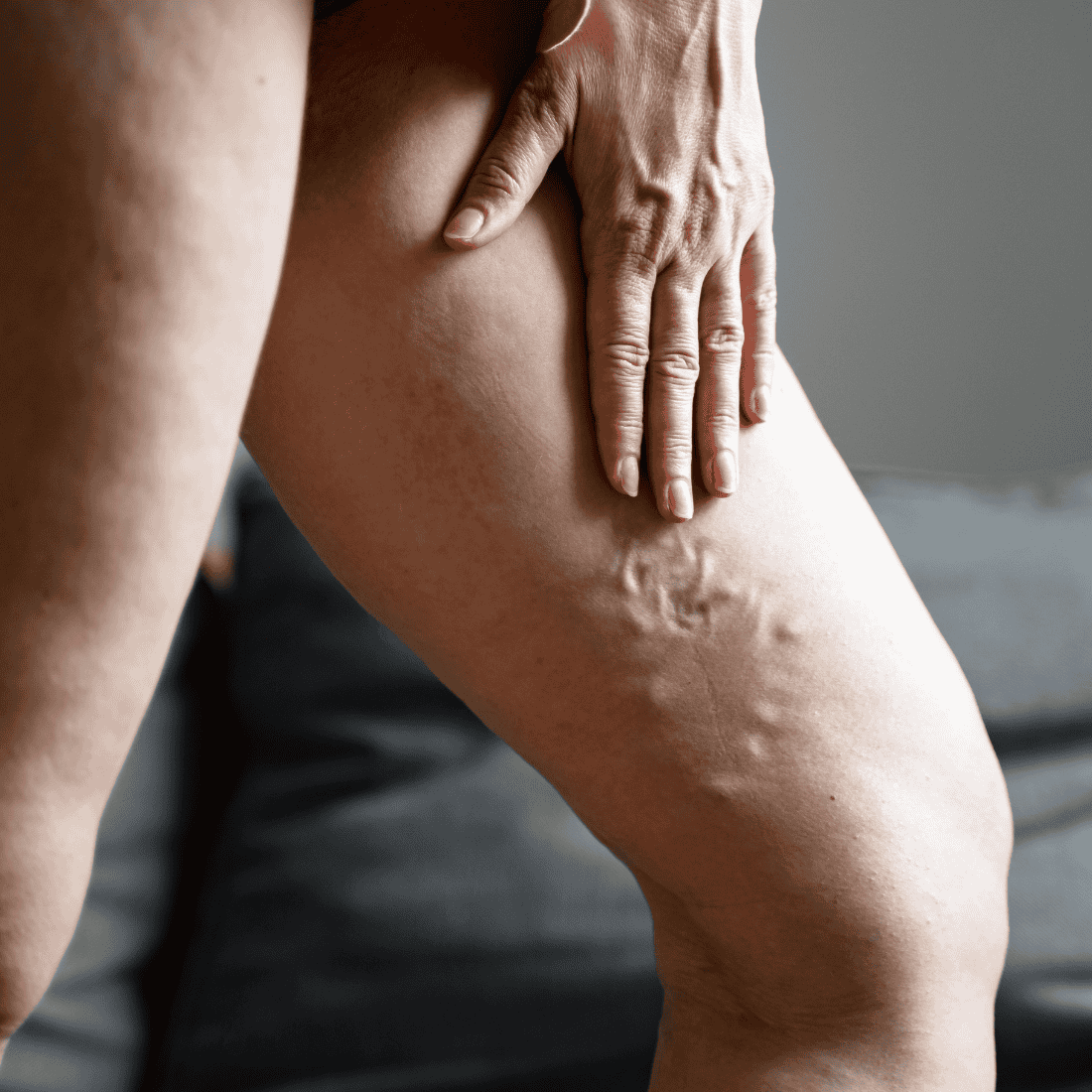By Dr. Peter Klapper Ph.D.,
Varicose veins are a common condition, yet misconceptions about them continue to circulate. Many people believe they only affect older adults, that crossing your legs can cause them, or that they are purely a cosmetic issue. The truth? There’s much more to varicose veins than meets the eye. Let’s separate fact from fiction and debunk some of the biggest myths surrounding varicose veins.
Myth #1: Only Older People Get Varicose Veins
Fact: While age can be a contributing factor, varicose veins can develop at any stage of life. Genetics, pregnancy, hormonal changes, prolonged sitting or standing, and even lifestyle choices can all play a role in their development. Many people in their 20s and 30s experience varicose veins, especially if they have a family history of vein issues.
Myth #2: Crossing Your Legs Causes Varicose Veins
Fact: This is one of the most persistent myths, but there’s no scientific evidence to support it. Varicose veins are primarily caused by weakened or damaged vein valves, which lead to poor circulation and blood pooling. While crossing your legs may temporarily affect blood flow, it does not directly cause varicose veins.
Myth #3: Varicose Veins Are Just a Cosmetic Problem
Fact: While varicose veins can be visually noticeable, they are not just a cosmetic issue. Many people experience symptoms such as pain, swelling, heaviness, itching, and fatigue in their legs. In severe cases, varicose veins can lead to complications like ulcers, blood clots, or deep vein thrombosis (DVT). If you experience discomfort, it’s essential to seek medical advice.
Myth #4: Only Women Get Varicose Veins
Fact: Although women are more prone to developing varicose veins due to hormonal changes, men can also suffer from them. Studies suggest that nearly 45% of men will experience varicose veins at some point in their lives. The problem is that men are less likely to seek treatment, often dismissing symptoms until they become severe.
Myth #5: Exercise Makes Varicose Veins Worse
Fact: Quite the opposite! Regular physical activity, particularly low-impact exercises like walking, swimming, or cycling, can improve circulation and strengthen the muscles that support healthy vein function. However, heavy weightlifting without proper form may increase pressure on veins, so moderation and balance are key.
Myth #6: There’s Nothing You Can Do to Prevent or Treat Varicose Veins
Fact: While you may not be able to completely prevent varicose veins—especially if they run in your family—there are plenty of ways to reduce your risk and manage symptoms. Lifestyle changes such as maintaining a healthy weight, staying active, wearing compression stockings, and elevating your legs can all help. Additionally, natural treatments like Forces of Nature’s Varicose Vein Control provides an effective, plant-based solution for soothing discomfort and improving the appearance of veins over time.
Myth #7: Surgery is the Only Treatment Option
Fact: In the past, invasive surgery was the primary solution for varicose veins, but modern medicine offers several non-invasive and minimally invasive treatments. Sclerotherapy, laser therapy, and radiofrequency ablation are effective alternatives with little downtime. Natural remedies and lifestyle changes can also make a significant difference in managing symptoms.
Final Thoughts
Understanding the truth about varicose veins is the first step to taking better care of your legs. Whether you’re looking to prevent them, ease discomfort, or find effective treatment options, knowledge is power. Don’t let myths keep you from taking control of your vein health—stay informed and take proactive steps toward healthier legs!


